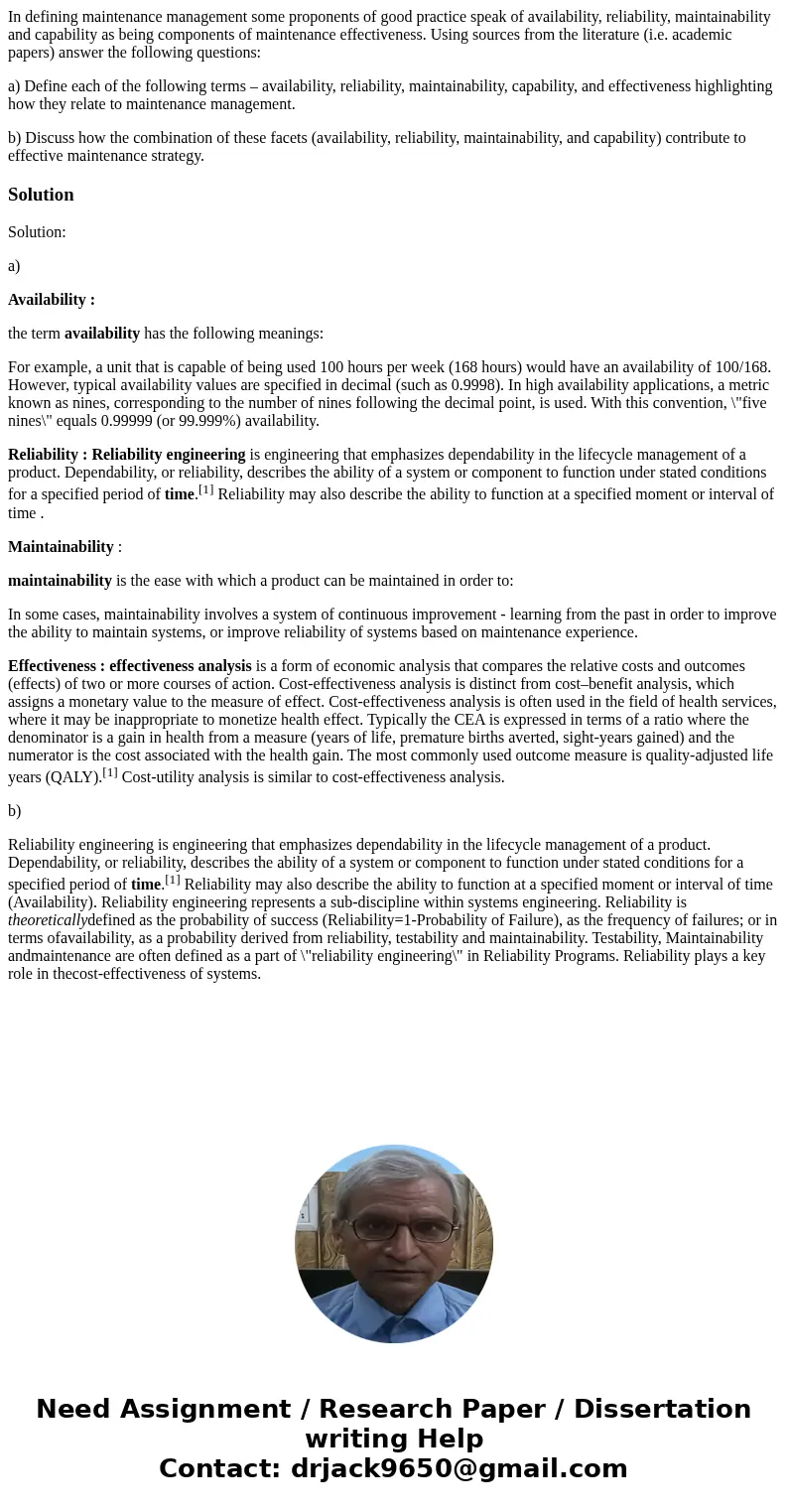In defining maintenance management some proponents of good p
In defining maintenance management some proponents of good practice speak of availability, reliability, maintainability and capability as being components of maintenance effectiveness. Using sources from the literature (i.e. academic papers) answer the following questions:
a) Define each of the following terms – availability, reliability, maintainability, capability, and effectiveness highlighting how they relate to maintenance management.
b) Discuss how the combination of these facets (availability, reliability, maintainability, and capability) contribute to effective maintenance strategy.
Solution
Solution:
a)
Availability :
the term availability has the following meanings:
For example, a unit that is capable of being used 100 hours per week (168 hours) would have an availability of 100/168. However, typical availability values are specified in decimal (such as 0.9998). In high availability applications, a metric known as nines, corresponding to the number of nines following the decimal point, is used. With this convention, \"five nines\" equals 0.99999 (or 99.999%) availability.
Reliability : Reliability engineering is engineering that emphasizes dependability in the lifecycle management of a product. Dependability, or reliability, describes the ability of a system or component to function under stated conditions for a specified period of time.[1] Reliability may also describe the ability to function at a specified moment or interval of time .
Maintainability :
maintainability is the ease with which a product can be maintained in order to:
In some cases, maintainability involves a system of continuous improvement - learning from the past in order to improve the ability to maintain systems, or improve reliability of systems based on maintenance experience.
Effectiveness : effectiveness analysis is a form of economic analysis that compares the relative costs and outcomes (effects) of two or more courses of action. Cost-effectiveness analysis is distinct from cost–benefit analysis, which assigns a monetary value to the measure of effect. Cost-effectiveness analysis is often used in the field of health services, where it may be inappropriate to monetize health effect. Typically the CEA is expressed in terms of a ratio where the denominator is a gain in health from a measure (years of life, premature births averted, sight-years gained) and the numerator is the cost associated with the health gain. The most commonly used outcome measure is quality-adjusted life years (QALY).[1] Cost-utility analysis is similar to cost-effectiveness analysis.
b)
Reliability engineering is engineering that emphasizes dependability in the lifecycle management of a product. Dependability, or reliability, describes the ability of a system or component to function under stated conditions for a specified period of time.[1] Reliability may also describe the ability to function at a specified moment or interval of time (Availability). Reliability engineering represents a sub-discipline within systems engineering. Reliability is theoreticallydefined as the probability of success (Reliability=1-Probability of Failure), as the frequency of failures; or in terms ofavailability, as a probability derived from reliability, testability and maintainability. Testability, Maintainability andmaintenance are often defined as a part of \"reliability engineering\" in Reliability Programs. Reliability plays a key role in thecost-effectiveness of systems.

 Homework Sourse
Homework Sourse